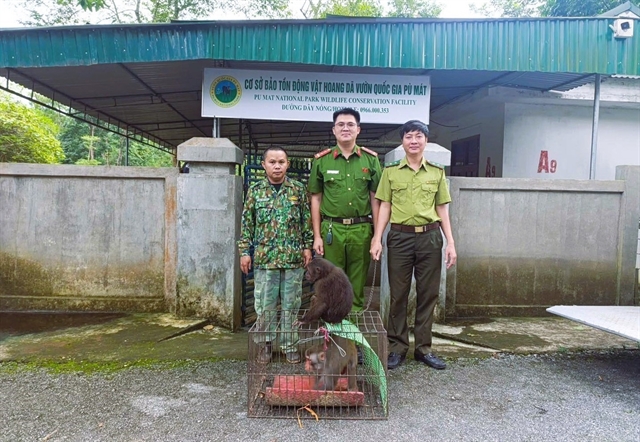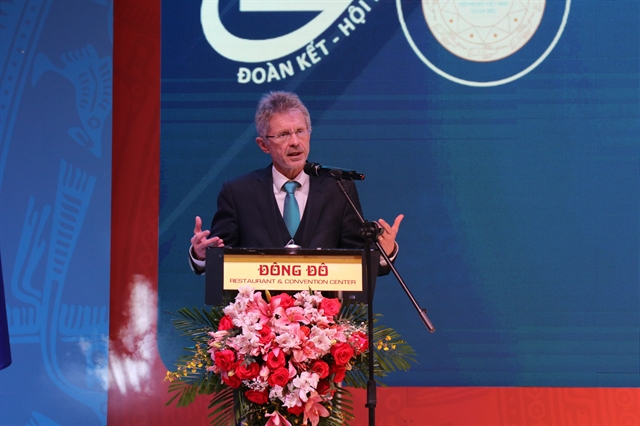 Environment
Environment

 |
| Agricultural officers of Thạnh Phú District in the Mekong province of Bến Tre instruct a farmer on giant freshwater prawn aquaculture. This is part of the province's programme to help residents cope with saline intrusion and drought in agriculture. VNA/VNS Photo Hồng Đạt |
ĐỒNG NAI — Saltwater intrusion is expected to increase into Mekong Delta estuaries in late March, prompting officials to advise residents to store fresh water at low tide for agriculture and daily use.
As reported by the National Center for Hydro-Meteorological Forecasting, the level of saltwater intrusion in the Mekong Delta during the dry season of 2022-2023 is projected to be similar to that of previous years.
The concentration of saltwater intrusion in the Mekong estuaries is set to be particularly significant during March, with the highest levels expected to occur between March 18 and March 25.
In the Vàm Cỏ and Cái Lớn rivers, the intrusion will be at its peak from March 18-25 and April 17-23.
Phùng Tiến Dũng, head of the Hydrological Forecasting Department for the central, Central Highlands, and southern regions under the National Centre for Hydro-Meteorological Forecasting said on February 20 that from February 21-24, saltwater intrusion in the Mekong Delta would continue to increase, then decline.
The highest salinity at surveyed stations is at the same level as in February 2022.
From February 20-28, water with a salinity of 1 per cent would intrude 65-70 km in the Vàm Cỏ Đông and Vàm Cỏ Tây rivers and 50-55 km in the Cửa Tiểu and Cửa Đại rivers.
During the same period, water with a salinity of 4 per cent would intrude 50-60 km in the Vàm Cỏ Đông and Vàm Cỏ Tây rivers.
Localities in the Mekong Delta are urged to promptly follow hydro-meteorological forecast updates and take proactive measures to prevent and combat saline intrusion.
They must take advantage of low tides to store fresh water for agriculture and daily life.
It is recommended that farmers limit irrigation to minimise production losses. Before delivering water to crops, salinity must be monitored in areas where fruit trees have high economic value and poor salt tolerance.
According to research about salinity intrusion in the Mekong Delta, saline intrusion has become increasingly serious in recent years.
It is caused by a combination of factors, including the low topography, a dense system of rivers and canals connected to the sea, drought, low flow rates in the Mekong River during the dry season, growing competition for rapidly depleting water resources, sea level rises, and land subsidence.
In 2020 saltwater intruded further inland than ever before and affected 10 out of 13 provinces in the Mekong Delta, causing severe damage to millions of hectares of farming land and the livelihoods of thousands of households.
Solutions and adaptation strategies include storing fresh water in ponds, shifting to farming systems and varieties more resilient to high salinity, changing cropping schedules, and building sluices to regulate saltwater intrusion. — VNS


.jpg)

